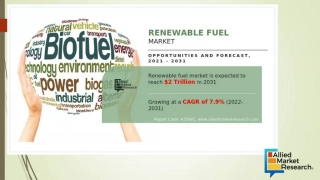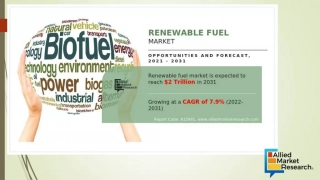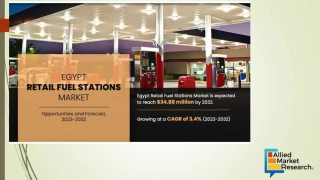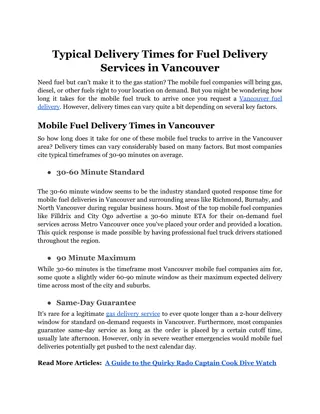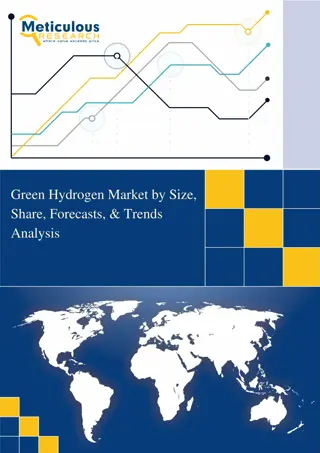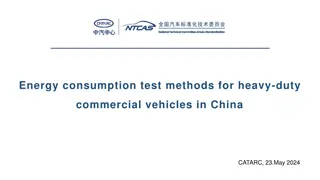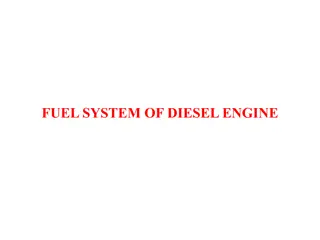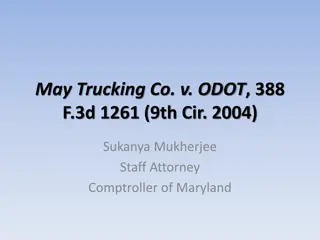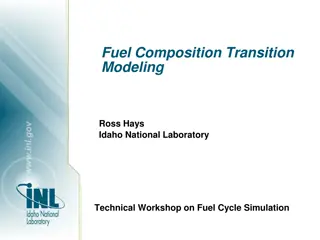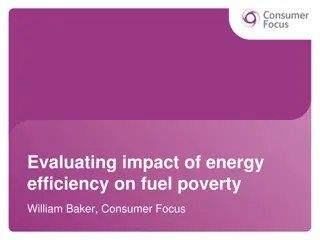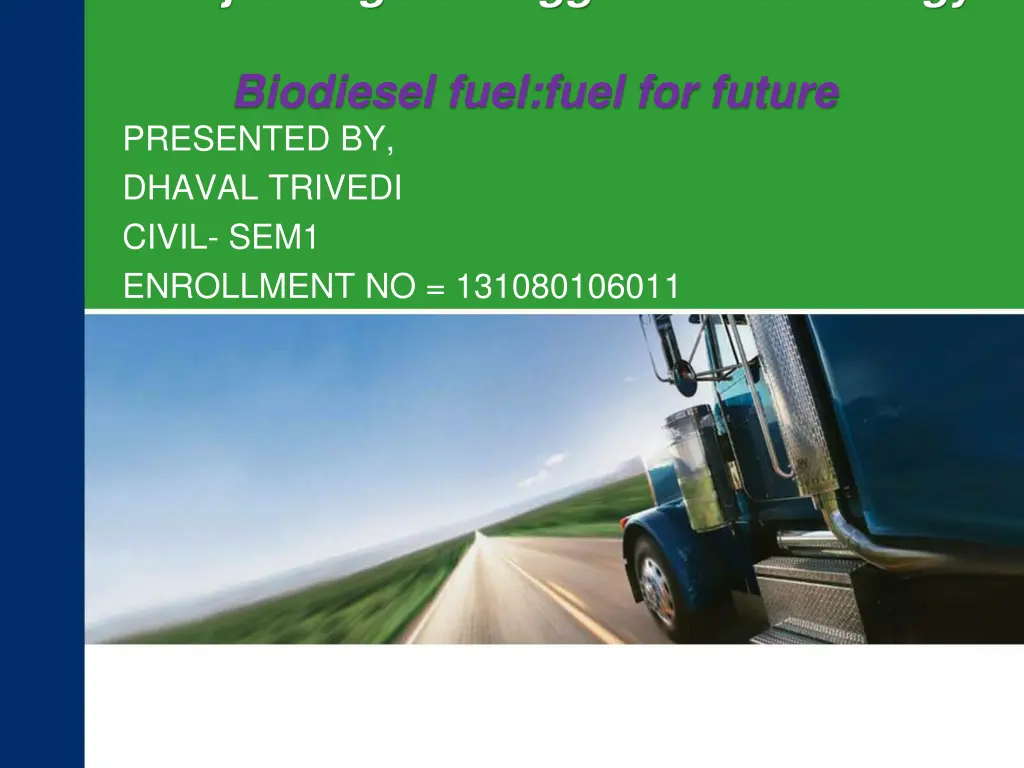
Biodiesel Fuel: History, Production, and Benefits Explained
Explore the origins, production process, and advantages of biodiesel fuel. Learn about Rudolf Diesel's contribution, the significance of transesterification, and the environmental benefits of using biodiesel blends in vehicles. Discover the types of biodiesel blends available and their impact on emission reductions.
Download Presentation

Please find below an Image/Link to download the presentation.
The content on the website is provided AS IS for your information and personal use only. It may not be sold, licensed, or shared on other websites without obtaining consent from the author. If you encounter any issues during the download, it is possible that the publisher has removed the file from their server.
You are allowed to download the files provided on this website for personal or commercial use, subject to the condition that they are used lawfully. All files are the property of their respective owners.
The content on the website is provided AS IS for your information and personal use only. It may not be sold, licensed, or shared on other websites without obtaining consent from the author.
E N D
Presentation Transcript
Amiraj College of Engg. And Technology Biodiesel fuel:fuel for future PRESENTED BY, DHAVAL TRIVEDI CIVIL- SEM1 ENROLLMENT NO = 131080106011
Key Biodiesel Questions HISTORY OF BIODIESEL FUEL. WHAT IS BIODIESEL FUEL? PRODUCTION OF BIODIESEL FUEL CHEMICAL REACTION USES OF BIODIESEL FUEL ADVANTAGES OF BIODIESEL DISADVANTAGES OF BIODIESL 2
HISTORY Transesterification of a vegetable oil was conducted as early as 1853 by Patrick Duffy, many years before the first diesel engine became functional. Rudolf Diesel's prime model, a single 10 ft (3 m) iron cylinder with a flywheel at its base, ran on its own power for the first time in Augsburg, Germany, on 10 August 1893 running on nothing but peanut oil. In remembrance of this event, 10 August has been declared "International Biodiesel Day 3
WHAT IS BIODIESEL? Biodiesel refers to a vegetable oil- or animal fat-based diesel fuel consisting of long-chain alkyl (methyl, ethyl, or propyl) esters. Biodiesel is typically made by chemically reacting lipids (e.g., vegetable oil, animal fat) with an alcohol producing fatty acid esters. Biodiesel is meant to be used in standard diesel engines and is thus distinct from the vegetable and waste oils used to fuel converted diesel engines. The National Biodiesel Board (USA) also has a technical definition of "biodiesel" as a mono-alkyl ester. 5
BLENDS Blends of biodiesel and conventional hydrocarbon-based diesel are products most commonly distributed for use in the retail diesel fuel marketplace. Much of the world uses a system known as the "B" factor to state the amount of biodiesel in any fuel mix; 6
100% biodiesel is referred to as B100, while 20% biodiesel, 80% petrodiesel is labeled B20 5% biodiesel, 95% petrodiesel is labeled B5 2% biodiesel, 98% petrodiesel is labeled B2. 7
Biodiesel Feedstocks Vegetable oils Soy, canola Other oils Palm, coconut, fish Animal fats beef tallow, sheep tallow, pork lard, poultry fats Recycled waste grease yellow grease (used cooking oil) trap greases 9
Biodiesel Manufacturing Biodiesel is commonly produced by the transesterification of the vegetable oil or animal fat feedstock. There are several methods for carrying out this transesterification reaction including common batch process supercritical processes, ultrasonic methods, microwave methods. 10
USES OF BIODIESEL FUEL Biodiesel can be used in pure form (B100) or may be blended with petroleum diesel at any concentration in most injection pump diesel engines. New extreme high-pressure common rail engines have strict factory limits of B5 or B20, depending on manufacturer. 12
Vehicular use and manufacturer acceptance Railway usage Aircraft use As a heating oil Cleaning Oil Spills Biodiesel in Generators Biodiesel to Hydrogen-Cell Power: A microreactor has been developed to convert biodiesel into hydrogen steam to power fuel cells. 14
Advantages of biodiesel Biodiesel does not contain sulphur. There is reduction of unburned hydrocarbon. There is 78.5% reduction in co2 emission. It is bio-degradable,non-toxic. It emits less green house gases. It can be used in some of the diesel. 15
DISADVANTAGES OF BIODIESEL Transportation and storage requires special management. Involves additional land use, as land area is taken up. Energy efficiency is less. It is less suitable for use in low temperature. It requires energy for production from the crops,animal fats. It is expensive than pertroleum diesel fuel. It is available in low quantity at present. 16
Winter Operations Biodiesel blending must be carefully managed at cold temps Fuel Handling Treat as a fuel (WHMIS, safety, etc) Cleaning / solvent effect (filters, tanks, hoses) Storage - Moisture - the enemy Desiccant filters on tank vents Long Term Storage - 9 months max, or use biocides with monthly examination Tank Preparation Properly cleaned, tested and vents are capped. 17
Pumps Biodiesel improves lubricity Should increase service life of sensitive injection pump models Blends of B20 or greater not recommended for 1994 and older injection pumps due to deterioration of natural rubber components Fuel Filters - Use OEM recommended filters with correct micron rating - Change at OEM recommended intervals after initial cleanout period - Only use pre-filtered fuel in vehicles - More frequent changes recommended in first 100 hours of operation Hoses 18

